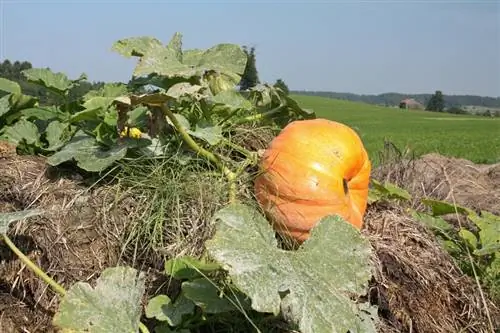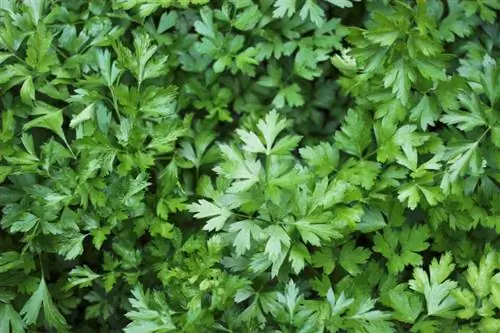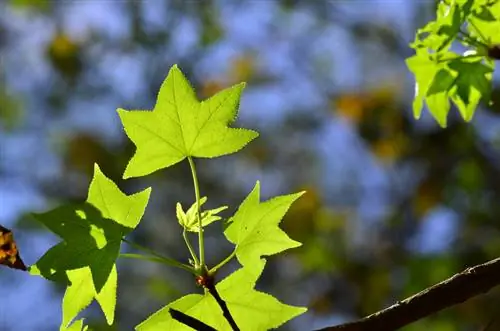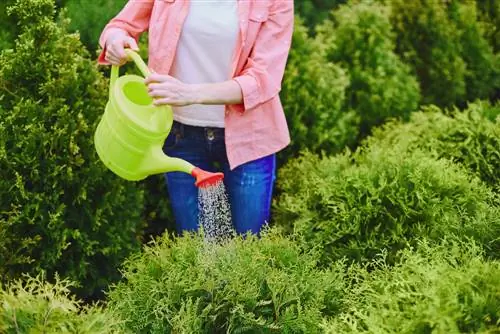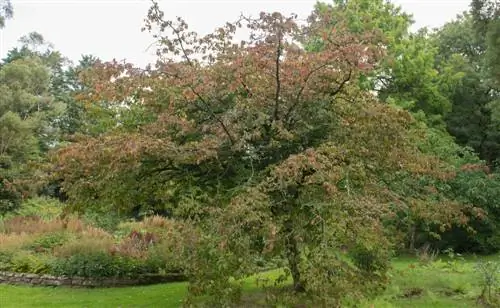- Author admin [email protected].
- Public 2023-12-16 16:46.
- Last modified 2025-01-23 11:21.
Thuja Smaragd is one of the particularly popular Thuja varieties because of its emerald green color and slender growth. The care is quite simple. What do you have to consider when caring for a Thuja Smaragd?
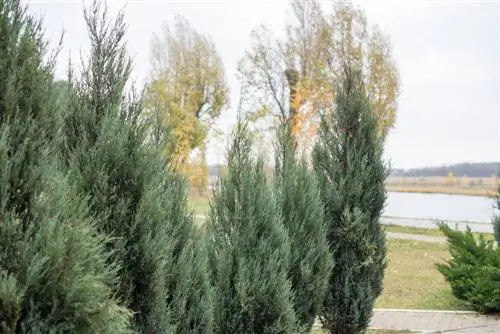
How do I properly care for a Thuja Smaragd?
To optimally care for a Thuja Smaragd, you should water regularly without causing waterlogging, fertilize in spring with conifer fertilizer, compost or horn shavings and only cut when necessary. Watch out for diseases such as root rot, shoot dieback and pest infestations to ensure he althy growth.
Can Thuja Smaragd also be cared for in a pot?
Thuja Smaragd can be cultivated not only as a hedge or solitaire in the garden, but also in a sufficiently large container. The tree of life then just needs to be watered and fertilized more frequently.
How do you water Thuja Smaragd correctly?
Like all arborvitae, Thuja Smaragd does not tolerate completely dry or waterlogged soil. Water regularly, especially in the first few years - even in winter if it has been dry for a long time.
Prevent waterlogging by creating drainage before planting so that rainwater can drain away.
What should you pay attention to when fertilizing Thuja Smaragd?
Frequent fertilization is not necessary on well-prepared soil. As a rule, it is enough if you supply the tree of life with conifer fertilizer (€8.00 on Amazon) in spring. It is even better to add compost and horn shavings. A layer of bark mulch is also a good fertilizer.
Use mineral fertilizers with caution. These can very quickly lead to over-fertilization. Fertilizing with Epsom s alt is only necessary if the tree of life is proven to be suffering from a magnesium deficiency.
When and how do you cut the tree of life correctly?
Thuja Smaragd primarily grows tall. This Thuja variety remains rather slender on the sides. Cutting is therefore only necessary in moderation.
Cutting can be done all year round, except on days with frost or strong sunlight.
Never cut into old wood because the Thuja will not sprout again there. You can shorten the tree of life as you wish.
What diseases and pests should you watch out for?
- Root rot
- Instinct death
- Pest infestation (leaf leaf miner)
Root rot and shoot death are caused by fungal infestation. The spread of fungal spores is facilitated by dense vegetation and waterlogged soils. However, fungal infestation can hardly be completely prevented.
The leaf miner only needs to be controlled if the infestation is very severe.
Why does Thuja Smaragd turn brown?
If the needles become too dry, it is often due to the soil being too dry. But other problems can also lead to brown needles:
- Overfertilization
- Sunburn
- Sprinkling s alt
- Pest Infestation
- Fungal infestation
The tree of life gets black needles when there is a lack of manganese.
How hardy is the tree of life?
Thuja Smaragd is absolutely winter hardy as soon as the tree of life has grown well. You should protect very young plants from too much winter sun and, to be on the safe side, put a layer of mulch over the root ball before winter.
Tip
Thuja Smaragd often doesn't thrive so well in the hedge and shows lots of brown spots. The reason for this is often that the tree of life was planted too densely. Thuja Smaragd needs more space for its roots than, for example, Thuja Brabant.


